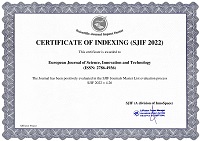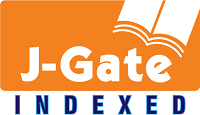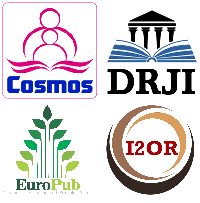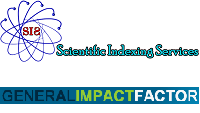Language Vitality Case of Higaonon Language in Rogongon, Iligan City
Abstract
In a globalized world today, the Indigenous Peoples’ languages have been impacted by the avalanche of socio-politico-economic factors which result to language instability. One of the IP languages in Mindanao, Philippines is the Higaonon language which is threatened with various social impacts. This study investigated the vitality of the Higaonon language using the EGIDS by Lewis & Simons (2010) as a tool and interviewed key informants. Qualitative method and descriptive analysis were used. Given the gap on the unmatched finding of ethnologue about the language domains and the DepEd policy in supporting the IP language, the researchers immersed themselves in a select area where Higaonon is used. Using the EGIDS, it was revealed that the Higaonon language is at Level 6b, threatened and vulnerable. However, some responses from informants indicated that the Higaonon language is vehicular somehow showing that is used in wider communication, education, and trade. On the other hand, it is shifting due to various factors that affect language progress. Important ideas from the narratives of the key informants are: mostly domestic use of the language, speakers’ discrimination due to the use of the language, inferiority of one’s ethnic identity, and motivation on sustaining the language use even outside the Philippines. Due to this, local policies and programs are enumerated to facilitate the survival and sustainability of the Higaonon language. The findings might be limited due to immersion into one area, therefore further investigations in various periphery areas where Higaonon is used are recommended.
References
Alejan, J., Ayop, J., Alojado, J., Abatayo, D., Abacahin, S., and Bonifacio, R. (2021). Heritage Language Maintenance and Revitalization: Evaluating the Language Endangerment among the Indigenous Languages in Bukidnon, Philippines. Department of Language and Literature, Central Mindanao University.
Araya, J. (2021). Initial Assessment on the Language Vitality of Binadjao Iligan. International Journal of Linguistics, Literature and Translation, 4(4), 155-159. http://doi.org/10.32996/ijllt
Bonifacio, R., Minguez, J., Mongado, D., de Ramos, D., Ojales, M. A., & Ong, T. (2022). Ethnolinguistic Vitality and Rootedness in Language and Identity Among Philippine Indigenous Communities. International Journal of Scientific & Technology Research, 11(1), 91-96. https://www.ijstr.org/research-paper-publishing.php?month=jan2022
Bustillo, R. C. T., Tiongson, G., & Remorosa, R. R. (2024). Utilizing Educational Technology for the Preservation and Revitalization of Indigenous Language and Culture: A Research Investigation. International Journal of Research Publications, 153(1), 192-219. http://dx.doi.org/10.47119/IJRP1001531720246945
Cacay, J. & Taja-on, E. (2023). An ethnographic study on the cognizance of the Higa-onon youth about their native language. Multidisciplinary Journal of Engineering Sciences, 2, 40-50. http://dx.doi.org/10.5281/zenodo.8118081
Cobarrubias, J. (1983). Ethical issues in status planning. In J. Cobarrubias & J. A. Fishman (Eds.), Progress in language planning: International perspectives (pp. 41–85). Mouton Publishers.
Cummins, J. (2000). Language, Power and Pedagogy: bilingual children in the crossfire. Clevedon: Multilingual Matters.
Department of Education. (2024). Mother Tongue-Based Learning Makes Lessons More Interactive and Easier for Students. Retrieved on 23 December 2024 from https://deped.gov.ph/2016/10/24/mother-tongue-based-learning-makes-lessonsmore-interactive-and-easier-for-students/
Department of Education. (2024). Towards Culturally Responsive Education for IP Learners. Retrieved on 23 December 2024 from https://www.deped.gov.ph/2016/10/06/towards-culturally-responsive-education-for-ip-learners/
Dumas, M. (2022). Indigenous people's movement-building and neoliberalism: A focus on the Higaonon people in Misamis Oriental, Philippines.
Eberhard, D., Simons, G., & Fennig, C. (2024). Ethnologue: Languages of the World. Twenty-seventh edition. Dallas, Texas: SIL International. Online version: http://www.ethnologue.com.
Ehala, M. (2015). Ethnolinguistic vitality. In K. Tracy, C. Ilie, & T. Sandel (Eds.), The international encyclopedia of language and social interaction. Wiley. https://doi.org/10.1002/9781118611463.wbielsi046
Ferrer, C. & Brangan, M. (2023). Assessment of vitality of Pangasinan language in the municipality of San Carlos City: Basis for recovery plan in language endangerment. Universal Journal of Educational Research, 2(1), 8-14.
Jamallullail, S. & Nordin, S. (2023). Ethnolinguistic Vitality Theory: The Last Stance for a Language Survival. Sustainable Multilingualism, 22, 27-55. https://doi.org/10.2478/sm-2023-0002
Krauss, M. (1992). The world’s languages in crisis. Language, 68(1), 4–10. https://doi.org/10.1353/lan.1992.0075
Lewis, P. & Simons, G. (2010). Assessing Endangerment: Expanding Fishman’s GIDS. Revue Roumaine de Linguistique, 55(2), 103-120. https://doi.org/10.1017/CBO9780511783364.003
Lewis, P. & Simons, G. (2012). The World’s Languages in Crisis: A 20-year Update. 26th Linguistics Symposium: Language Death, Endangerment, Documentation, and Revitalization, University of Wisconsin. https://doi.org/10.1075/slcs.142.01sim
Lindell, M., Näsman, M., Nyqvist, F., Björklund, S., Nygård, M., & Hemberg, J. (2023). The role of ethnolinguistic identity, vitality and trust in perceived language climate change: the case of Swedish speakers in Finland. Journal of Multilingual and Multicultural Development, 1–19. https://doi.org/10.1080/01434632.2023.2227141
Luza, J.M. (2023). Conceptualizing Indigenous Identity: Negotiation of Internal and External Factors for Indigenization. International journal of multidisciplinary research and analysis, 6(6), 2373-2379.
Mabuan, R. A. (2021). The Dumagat language: Vitality, challenges, and efforts for preservation. Indigenous Studies Review, 12(2), 45–63.
McFarland, C. D. (1994). Subgrouping and number of Philippine languages or dialects. Linguistic Society of the Philippines.
Mufwene, S.S. (2017). Language vitality: The weak theoretical underpinnings of what can be an exciting research area. Linguistic Society of America. Language, 93(4), 223.
Obligar, N.A. (2024). Indigenous Language Shift and Maintenance of Tribal Communities in a Multilingual Society: A Review of Literature. Educators of Negros Island Incorporated. Retrieved on September 2024 from https://www.researchgate.net/publication/384045616
Reid, L. A. (2018). Assessing the vitality of Philippine indigenous languages. Language Documentation and Conservation, 12, 134–157.
Simons, G. F., & Lewis, M. P. (2012). The world’s languages in crisis: A 20-year update. In E. Mihas, B. Perley, G. Rei-Doval, & K. Wheatley (Eds.), Responses to language endangerment: In honor of Mickey Noonan (pp. 3–20). John Benjamins Publishing. https://doi.org/10.1075/clu.2.01sim
Smolicz, J. J. (1984). Minority languages and the core value theory. International Journal of the Sociology of Language, 1984(50), 51–72. https://doi.org/10.1515/ijsl.1984.50.51
Summer Institute of Linguistics Philippines. (2024). Higaonon. Retrieved on 23 December 2024 from https://philippines.sil.org/resources/search/language/mba
Villanueva, E. S., & Baluyos, G. G. (2014). Language shift and maintenance among the Subanen: Implications for educational policy and practice. Philippine Journal of Linguistics, 45(2), 78–95.
Villanueva, H. D., & Baluyos, E. L. (2014). Ethnolinguistic vitality of the Subanen communities in Ozamiz City, Philippines. Journal of Multidisciplinary Studies, 3(2), 66-88.
Copyright (c) 2024 Alican M. Pandapatan, Adiah A. Ali, Aleah T. Macarambon, Charry G. Altamia, Naida U. Ramos, Norjanah U. Hadji Socor, Sittie Zinab M. Abaton, Alyanah G. Pantao

This work is licensed under a Creative Commons Attribution 4.0 International License.


 ISSN
ISSN 











